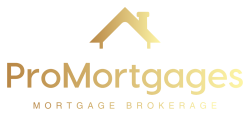Securing a mortgage or loan in Canada can be a daunting process, especially if you have unique financial circumstances or credit challenges. Fortunately, there are options available to borrowers beyond traditional bank loans. In this comprehensive guide, we’ll explore the concepts of A lending and B lending options in Canada, how they differ, and how they can help borrowers access the financing they need.
What is A Lending?
A lending refers to traditional lending options offered by banks, credit unions, and other mainstream financial institutions. A lenders typically have strict lending criteria and require borrowers to meet stringent credit, income, and employment requirements to qualify for a mortgage or loan. Borrowers who qualify for A lending typically have strong credit histories, stable employment, and sufficient income to support their loan payments.
Characteristics of A Lending:
- Prime Interest Rates: A lenders offer mortgages and loans at prime interest rates, which are the lowest rates available in the market. Borrowers with excellent credit and financial profiles are eligible for these competitive interest rates, resulting in lower monthly payments and overall interest costs.
- Low Down Payment Requirements: A lenders may require borrowers to provide a down payment of at least 5% of the property’s purchase price for a mortgage. However, borrowers who can provide a down payment of 20% or more may qualify for a conventional mortgage without the need for mortgage insurance.
- Stringent Qualification Criteria: A lenders have strict qualification criteria and require borrowers to meet specific requirements related to credit history, income, employment, and debt-to-income ratio. Borrowers must demonstrate their ability to repay the loan and meet the lender’s risk assessment criteria to qualify for A lending.
- Full Documentation: A lenders typically require borrowers to provide extensive documentation to verify their income, assets, and liabilities. This may include pay stubs, tax returns, bank statements, and other financial documents to support the mortgage or loan application.
- Limited Flexibility: A lending options may have limited flexibility in terms of credit requirements, loan terms, and eligibility criteria. Borrowers who do not meet the lender’s strict criteria may not qualify for A lending and may need to explore alternative financing options.
What is B Lending?
B lending, also known as alternative lending, refers to lending options offered by non-traditional lenders, such as mortgage investment corporations (MICs), private lenders, and alternative mortgage lenders. B lenders specialize in providing financing to borrowers who may not qualify for A lending due to credit challenges, income volatility, or other factors. B lending options offer flexibility and accessibility to borrowers who may not meet the stringent criteria of traditional lenders.
Characteristics of B Lending:
- Higher Interest Rates: B lenders typically charge higher interest rates than A lenders to compensate for the increased risk associated with lending to borrowers with credit challenges or unique financial circumstances. These higher interest rates may result in higher monthly payments and overall borrowing costs for borrowers.
- Flexible Qualification Criteria: B lenders have more flexible qualification criteria than traditional lenders, allowing borrowers with less-than-perfect credit, self-employed individuals, or those with non-traditional income sources to qualify for financing. B lenders focus on the borrower’s ability to repay the loan rather than solely relying on credit scores or income documentation.
- Higher Down Payment Requirements: B lenders may require borrowers to provide a higher down payment than traditional lenders, typically ranging from 10% to 20% of the property’s purchase price. A larger down payment reduces the lender’s risk and provides additional security for the loan.
- Shorter Loan Terms: B lending options may offer shorter loan terms than traditional mortgages, ranging from one to five years. Shorter loan terms allow borrowers to improve their credit profile and financial situation over time, with the goal of refinancing into a traditional mortgage with lower interest rates in the future.
- Less Documentation: B lenders may require less documentation than traditional lenders, making it easier for borrowers to qualify for financing. While borrowers must still demonstrate their ability to repay the loan, B lenders may be more lenient in their documentation requirements, particularly for self-employed individuals or those with non-traditional income sources.
When to Consider A Lending vs B Lending:
Choosing between A lending and B lending options depends on your individual financial circumstances, credit history, and borrowing needs. Here are some scenarios in which each option may be appropriate:
Consider A Lending if:
- You have excellent credit and a strong financial profile.
- You can provide a significant down payment of 20% or more.
- You have stable employment and sufficient income to support the mortgage payments.
- You qualify for prime interest rates and prefer lower monthly payments and overall borrowing costs.
Consider B Lending if:
- You have less-than-perfect credit or a limited credit history.
- You are self-employed or have non-traditional income sources.
- You do not meet the strict qualification criteria of traditional lenders.
You need financing quickly and cannot wait for the traditional mortgage approval process.









 by Bhasha Infotech
by Bhasha Infotech